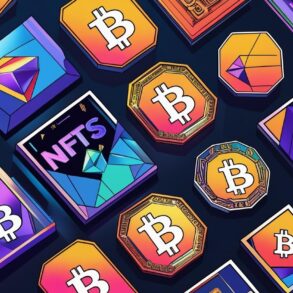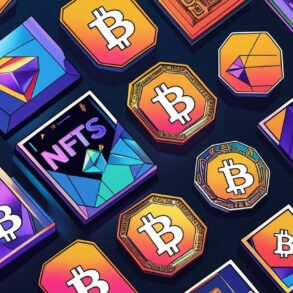
In the digital renaissance of Web3, where decentralized applications (DApps), non-fungible tokens (NFTs), and DeFi platforms are redefining interactions, storytelling emerges as a pivotal tool for marketers. Crafting compelling narratives is not just about brand promotion; it’s about forging a connection in a space where technology meets people. For Web3 marketers, the ability to tell a story that resonates with both investors and users is a blend of art and strategy.
Web3, the next iteration of the internet, is built on the pillars of decentralization, blockchain technology, and token-based economics. Here, the story is not just about a product or service; it’s about a vision of the future. Effective storytelling in this space involves weaving narratives that encapsulate the ethos of decentralization, the empowerment of users, and the transformative potential of the technology.
Consider the rise of NFTs, for instance. Beyond their market value, the true allure of NFTs lies in the stories they tell — be it about artistic expression, community belonging, or digital ownership. Successful Web3 projects like CryptoPunks or Bored Ape Yacht Club aren’t just selling digital assets; they are selling a part of a broader narrative, a membership to an exclusive digital renaissance.
Is [project name] legit or a scam?
Do crypto investors/VCs Google your founder and brand before investing?
After:
– Working on 150+ PR campaigns
– Raising 100+ million for web3 brandsI have some tips to share on attracting investments to your project.
(1/11)🧵 pic.twitter.com/5sVO7zmQOY
— Tim Haldorsson (@TimHaldorsson) September 18, 2023
Crafting Stories That Resonate
The crux of storytelling in Web3 marketing is to create narratives that resonate on a personal level while highlighting the technological prowess. This involves a delicate balance. On one side, there’s the need to simplify complex blockchain concepts into stories that the average user can relate to. On the other, there’s the necessity to showcase the innovation and potential of the project to savvy investors and crypto enthusiasts.
For example, when a DeFi platform talks about yield farming or liquidity pools, the story shouldn’t just dwell on the technicalities. It should paint a picture of financial empowerment, of being part of a system that’s more inclusive and equitable than traditional finance.
Utilizing Community as Storytellers
In Web3, the community is not just an audience; it’s an active participant in the storytelling process. Leveraging platforms like X (formerly Twitter) or Discord, projects can encourage their community to share their experiences, create user-generated content, and become brand advocates. These personal stories add layers of authenticity and credibility, crucial in a space often marred by skepticism.
Take, for instance, how DAOs (Decentralized Autonomous Organizations) utilize community governance. The narrative here extends beyond just decentralized decision-making; it’s about community members shaping the future of the project, a tale of collective empowerment and direct involvement.
Every builder in Web3 should use ICP.
Here are 10 reasons why 👇🧵
— Tim Haldorsson (@TimHaldorsson) October 24, 2023
The Role of Transparency in Storytelling
In the blockchain world, where transparency is king, stories need to reflect this value. This means being open about the project’s roadmap, its successes and setbacks, and the team’s vision and values. A transparent narrative builds trust and demonstrates a commitment to the principles of Web3.
For example, when a project undergoes a smart contract audit, sharing this story isn’t just about showcasing security measures; it’s about illustrating a commitment to protecting user interests, a narrative that builds confidence and trust in the platform.
Conclusion
In the ever-evolving landscape of Web3, the art of storytelling is a powerful marketing tool. It’s about creating narratives that not only highlight technological innovation but also resonate with the community’s aspirations and values. By mastering this art, Web3 marketers can engage both investors and users, building a loyal community that’s invested not just financially, but emotionally in the project’s success. As Web3 continues to grow, those who can tell the most compelling stories will be the ones who define its future.
In the digital renaissance of Web3, where decentralized applications (DApps), non-fungible tokens (NFTs), and DeFi platforms are redefining interactions, storytelling emerges as a pivotal tool for marketers. Crafting compelling narratives is not just about brand promotion; it’s about forging a connection in a space where technology meets people. For Web3 marketers, the ability to tell a story that resonates with both investors and users is a blend of art and strategy.
Web3, the next iteration of the internet, is built on the pillars of decentralization, blockchain technology, and token-based economics. Here, the story is not just about a product or service; it’s about a vision of the future. Effective storytelling in this space involves weaving narratives that encapsulate the ethos of decentralization, the empowerment of users, and the transformative potential of the technology.
Consider the rise of NFTs, for instance. Beyond their market value, the true allure of NFTs lies in the stories they tell — be it about artistic expression, community belonging, or digital ownership. Successful Web3 projects like CryptoPunks or Bored Ape Yacht Club aren’t just selling digital assets; they are selling a part of a broader narrative, a membership to an exclusive digital renaissance.
Is [project name] legit or a scam?
Do crypto investors/VCs Google your founder and brand before investing?
After:
– Working on 150+ PR campaigns
– Raising 100+ million for web3 brandsI have some tips to share on attracting investments to your project.
(1/11)🧵 pic.twitter.com/5sVO7zmQOY
— Tim Haldorsson (@TimHaldorsson) September 18, 2023
Crafting Stories That Resonate
The crux of storytelling in Web3 marketing is to create narratives that resonate on a personal level while highlighting the technological prowess. This involves a delicate balance. On one side, there’s the need to simplify complex blockchain concepts into stories that the average user can relate to. On the other, there’s the necessity to showcase the innovation and potential of the project to savvy investors and crypto enthusiasts.
For example, when a DeFi platform talks about yield farming or liquidity pools, the story shouldn’t just dwell on the technicalities. It should paint a picture of financial empowerment, of being part of a system that’s more inclusive and equitable than traditional finance.
Utilizing Community as Storytellers
In Web3, the community is not just an audience; it’s an active participant in the storytelling process. Leveraging platforms like X (formerly Twitter) or Discord, projects can encourage their community to share their experiences, create user-generated content, and become brand advocates. These personal stories add layers of authenticity and credibility, crucial in a space often marred by skepticism.
Take, for instance, how DAOs (Decentralized Autonomous Organizations) utilize community governance. The narrative here extends beyond just decentralized decision-making; it’s about community members shaping the future of the project, a tale of collective empowerment and direct involvement.
Every builder in Web3 should use ICP.
Here are 10 reasons why 👇🧵
— Tim Haldorsson (@TimHaldorsson) October 24, 2023
The Role of Transparency in Storytelling
In the blockchain world, where transparency is king, stories need to reflect this value. This means being open about the project’s roadmap, its successes and setbacks, and the team’s vision and values. A transparent narrative builds trust and demonstrates a commitment to the principles of Web3.
For example, when a project undergoes a smart contract audit, sharing this story isn’t just about showcasing security measures; it’s about illustrating a commitment to protecting user interests, a narrative that builds confidence and trust in the platform.
Conclusion
In the ever-evolving landscape of Web3, the art of storytelling is a powerful marketing tool. It’s about creating narratives that not only highlight technological innovation but also resonate with the community’s aspirations and values. By mastering this art, Web3 marketers can engage both investors and users, building a loyal community that’s invested not just financially, but emotionally in the project’s success. As Web3 continues to grow, those who can tell the most compelling stories will be the ones who define its future.
This post was originally published on this site be sure to check out more of their content







